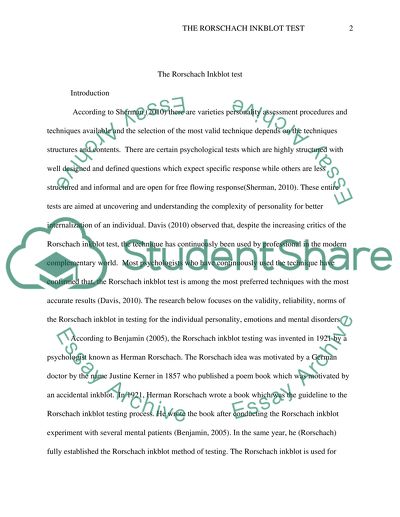Cite this document
(“The Rorschach Technique Essay Example | Topics and Well Written Essays - 2250 words”, n.d.)
Retrieved from https://studentshare.org/psychology/1396053-rorshach-inkblot-test-final-paper
Retrieved from https://studentshare.org/psychology/1396053-rorshach-inkblot-test-final-paper
(The Rorschach Technique Essay Example | Topics and Well Written Essays - 2250 Words)
https://studentshare.org/psychology/1396053-rorshach-inkblot-test-final-paper.
https://studentshare.org/psychology/1396053-rorshach-inkblot-test-final-paper.
“The Rorschach Technique Essay Example | Topics and Well Written Essays - 2250 Words”, n.d. https://studentshare.org/psychology/1396053-rorshach-inkblot-test-final-paper.


